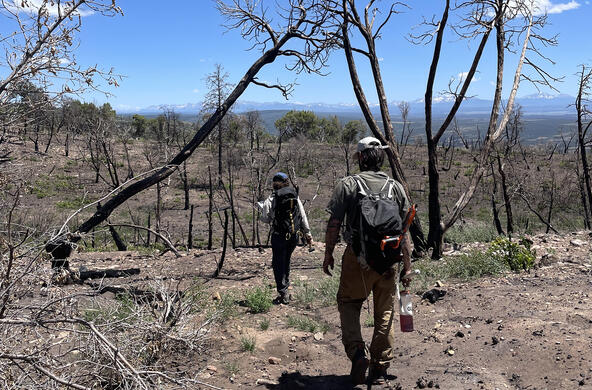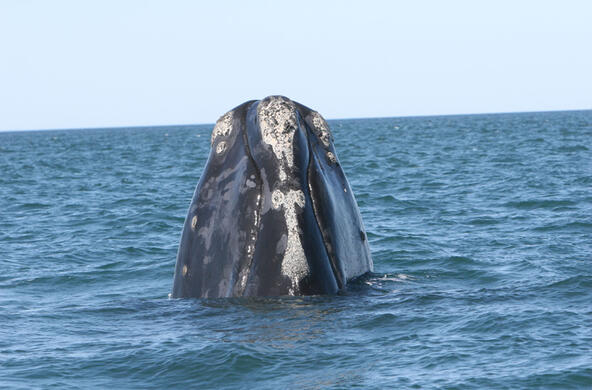Insects and tree diseases imported as a byproduct of global trade are the most severe and urgent threat to forest health in much of the US.
These pests infest and kill trees in natural forests as well as on city streets and in parks and yards.
Urban trees are declining right when we need them most
Many US cities are experiencing a rise in temperature and extreme flooding; trees provide vital cooling and floodwater mitigation. They also improve air quality.
Several factors are contributing to urban tree decline nationwide
On the shortlist are imported tree-killing insects and diseases like emerald ash borer, spotted lanternfly, and sudden oak death. Our forests have been damaged by wave after wave of imported pests. The good news – new introductions are preventable. Some common-sense protections, if implemented by the federal government, would save communities billions of dollars each year.

Imported forest pests are a problem in all 50 states, but the East, Midwest, and California have been especially hard hit
These pests can decimate an entire species of tree in a matter of a few decades. This happened in the last century with chestnut and elm, and it is happening right now with eastern hemlock and ash.
Most forest pests are introduced via two pathways
Solid wood packaging materials used in pallets and crates, and nursery plants are two major pathways. When solid wood packaging or plants are moved between continents, they can carry pests with them. Despite measures to clean up these pathways, both wood packaging and nursery plants continue to transport new damaging pests into our communities and forests.
Homeowners and municipal governments bear most of the cost of forest pest damage
These voices are not being heard in the public discussion of this issue. Imported forest pests cost the country over $4 billion each year, and the lion’s share of that cost is borne by homeowners and local governments. When a new pest arrives, communities pay directly to remove and replace dead trees, and indirectly via lost cooling and stormwater mitigation benefits and reduced functionality of our parks and greenspaces.

Homeowners pay to take down dangerous trees, and they also lose property value when their trees die. Actions to prevent pest introductions would save money in the long run, but importing companies have no incentive to take action because the cost is transferred to homeowners and municipal governments. In effect, homeowners and communities are subsidizing this hidden cost of trade.
Because forest pest damages are spread diffusely, the voices of the affected parties are also diffuse. Their concerns are not currently heard in the discussion of policies on this issue.
Three recent actions quietly advanced by federal agencies and Congress move in the right direction but will not solve the problem
- US Customs and Border Protection issued a new guideline this fall mandating that violations of wood packaging regulations will be addressed more immediately and more stringently. BUT penalties are still low.
- USDA-APHIS streamlined the process for adding plants to their list of plants that cannot be imported because they might carry an imported pest. BUT current criteria only consider known pests. Pests like sudden oak death were unknown until they became established in the US and started killing trees.
- Amendment #23 to the House version of the 2018 Farm Bill would advance some aspects of pest prevention. New provisions would expand the information agricultural specialists can use to evaluate whether a plant’s importation should be restricted, allow broader use of emergency funding during a pest outbreak, encourage better interagency coordination in surveillance for new forest pests, and require USDA to expand reporting on pest detections and interceptions. The House has not yet passed the Farm Bill but is likely to do so in the near future.
There are several actions the federal government could take to strengthen the country’s defenses against imported pests
- Require that goods imported to the US be packaged in non-solid wood materials. Pallets and crates can be made of composite engineered wood products or other materials. We would implement this change for imports; our trading partners would likely implement it for US exports. This would affect ~10-20% of pallets produced in the US that are used for international shipping.
- Restrict importation of live plants that are closely related to native North American trees. These are most likely to transmit insects and diseases to our native trees.
- Strengthen our last line of defense: the national system for surveillance and eradication of new pest outbreaks. If pest outbreaks are caught early, they can often be eradicated. Once they spread, costs skyrocket, and eradication becomes impossible.
Trade is a hot topic
As the US considers tariffs and new trade agreements, we should implement clean trade practices that will keep our trees safe from invasive pests and diseases.
Takeaways
- Imported forest pests are a nation-wide problem. They are destroying trees and forests in every state and cost billions of dollars annually.
- Homeowners and communities are subsidizing a hidden cost of international trade, yet their voices are missing from policy discussions on this issue.
- Prevention hinges on stopping pests at their source, but public awareness about the issue focuses on local impacts rather than what we can do to stop the problem.
- Forest pests enter the country through the international movement of solid wood packaging and live plants.
- Current plant protections are inadequate, as evidenced by years of destructive pest introductions, as well as scientific studies.
- Recent actions by agencies and Congress indicate that concern about this issue is finally reaching Washington. However, much more needs to be done by the federal government to solve this problem. The following changes would provide the most protection for trees and local economies, securing the benefits people derive from forests and trees.
i. Phase out solid wood packaging in international trade.
ii. Restrict importation of live plants most closely related to native trees.
iii. Strengthen programs for surveillance and eradication of new pest outbreaks.
For more information, visit Tree-SMART Trade or contact project lead Dr. Gary Lovett.
Cary Institute of Ecosystem Studies is an independent nonprofit center for environmental research. Since 1983, our scientists have been investigating the complex interactions that govern the natural world. Their findings lead to more effective management and policy actions and increased environmental literacy. Our staff are global experts in freshwater and forest health, disease ecology, urban ecology, and climate change.
The Science Policy Exchange is collaborative of six world-class research institutions and four associated National Science Foundation Long Term Ecological Research (LTER) sites dedicated to increasing the application of science to environmental policy, conservation, and natural resource management.






